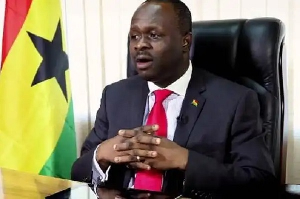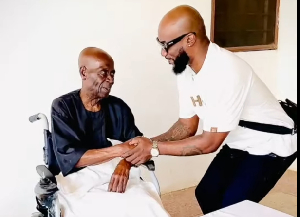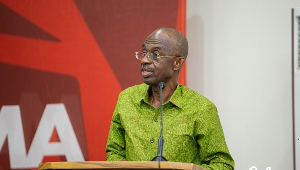The word et cetera (abbreviated to ‘etc’ meaning ‘and the rest’) is used loosely in most cases. Teaching rules state that this word must never be part of teachers’ vocabulary. Why? The teacher’s job is one of certainty or specificity. And the teacher has a specified number of objectives to achieve during each lesson and these objectives will require that pupils be able to give a specified number of examples, and not just some examples.
During teaching or lesson delivery, the teacher will mention several examples for pupils to hear, see and/or jot into their jotters. Therefore, in the teacher’s own summary notes to the pupils, no ‘etc’ is required. That is, any example which is too powerful that its omission from the list necessitates ‘etc’ is better added to the list.
How can teachers avoid using ‘etc’? Give sufficient number of examples, usually five, under every circumstance that calls for examples. In both BECE and WASSCE, candidates will hardly be asked to give more than five examples. Also, remember to give parallel examples: all examples should be singular or plural.
What makes ‘etc’ weird in most instances is its widespread misuse. How and why? If a list begins with any word or phrase that implies partiality or incompleteness, SUCH A LIST MUST NEVER END IN ‘ETC’. Consider these examples:
1. Some parts of speech are verbs, nouns, adverbs etc.
2. Some parts of speech are verbs, nouns and adverbs etc.
3. Some parts of speech are verbs, nouns and adverbs.?
Only Sentence 3 is correct because on seeing the word some, the reader already knows that s/he won’t see all the parts of speech. Thus, ‘etc’ in Sentence 1 & 2 is tautologous. This same principle is true for all lists beginning with these words or phrases: include, like, such as, example and for example.
How do we (teachers at primary, JHS and SHS) use ‘etc’ correctly if we feel we must still use it? —insert it at the end of the sentence. Still remember to use it outside the teaching arena. Consider these:
4. He brought mathematics, economics, law books etc. plus three pens.
5. He brought three pens plus mathematics, economics, law books etc. ?
Only Sentence 5 sounds better because the full stop at the end of ‘etc’ in Sentence 4 incorrectly suggests the end of the sentence. Some authors write ‘etc’ without the full stop. Such a practice is never bad but it leads to inconsistency for beginner-learners who must struggle to distinguish TRUE ABBREVIATIONS from CONTRACTIONS.
A TRUE ABBREVIATION is a shortened form derived from eliminating some letters at the end of a word (eg, sec. from secretary, Rev. from Reverend and min. from minute). These words are punctuated with full stops to represent the missing letters. Conversely, a CONTRACTION (not a contracted form) is formed by eliminating the letters in between the first and last letters (eg, Mr for Mister, St for Saint and hr for hour). In British English, contractions are never punctuated with full stops. Follow this pattern in your teaching here in Ghana.
Digressing a bit, we step on the verb WEIGH. This verb seems so powerful that it confuses many of the authors who write mathematics and natural science books for lower primary. Unfortunate to those authors but fortunate to you (this reader)!
In science, in everyday speech, and in buying and selling, the verb WEIGH is used for either MASS or WEIGHT. Whether mass or weight is intended depends on the instrument used and procedure for measuring. Read the following sentences carefully:
6. The salt weighs 7.5 g.
7. A stone weighs 2.90 N in the air.
In Sentence 6, the physical quantity described is MASS and instrument to use is a BALANCE (electronic balance). In Sentence 7, the physical quantity being described is WEIGHT and the instrument to use is a SPRING BALANCE.
Notice that the difference between mass and weight in Sentence 6 & 7 is strictly based on the unit of measure: KILOGRAM (kg and its sub-unit gram: g) for mass and NEWTON (N) for weight. Thus, the terms scale and balance are used interchangeably both in science and in everyday speech for the instruments used to measure mass and weight, eg, beam balance, electronic balance, kitchen scale and bathroom scale are all used to measure mass but spring balance is used to measure weight. Technically, a balance is used to measure mass but a scale is used to measure weight. Thus, spring balance is actually spring scale.
The second difference between mass and weight in terms of measurement is the process of doing the measurement itself. Measurement of mass involves making the substance to rest on the surface or dish of the measuring device but measurement of weight involves suspending the substance usually in the air. See figures below.
The above info is excerpted from a to-be integrated science dictionary written by the author of this article. The dictionary is still as soft as this article you are reading. Why? A publisher is still being searched for. Interested? Contact as shown below.
Long live practising teachers! Long live Ghana!
IDRIS PACAS
020-9101533 & iddrisuabdulai12@yahoo.com
Opinions of Sunday, 26 July 2015
Columnist: Pacas, Idris


















